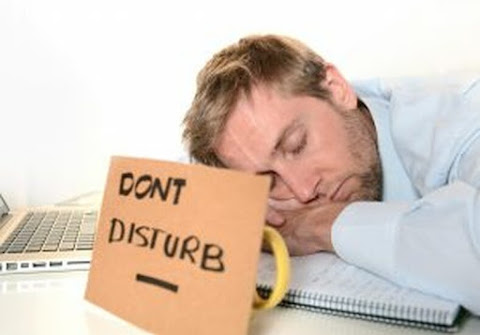Power Naps: Why You Need Them
It’s 3 in the
afternoon and you can barely keep your eyes open. Your mind feels foggy, and all you want to do
is curl up under your desk for 20 minutes and take a nap. But cutting-edge,
productive people don’t take naps, do they?
Actually, they do.
It turns out
that a nap is exactly what you need in the afternoons when drowsiness takes
over your body and mind.
From N.B.A.
players1 to Google employees2, high-achieving people are
turning to naps to recharge.
Sleep
experts have discovered that naps can improve stamina and motor skills, and
enhance creativity. In fact, Dr. Sara C.
Mednick, author of Take a Nap! Change
Your Life and Assistant Professor of Department of Psychology at the University
of California, Riverside says,
“…without a midday rest, we are not able
to perform at optimal levels throughout the day. In fact, our performance falls
apart. Napping maintains and even boosts our skills.”3
When you
are running on empty and slugging through your projects, wouldn’t it be great
to have a fresh burst of creativity and energy?
That is what a power nap can provide.
There are
measurable physical benefits from napping as well. The risk of dying from a heart-related
complication decreases in nap-takers (37% for those who nap at least 3 times
per week!),4 and the release of growth hormone aids in weight loss.
How to power nap
15-30 minutes
seems to be the sweet spot for the best power nap. Berkley biology students report that naps
must be short in order to most effective. When naps exceed 45 minutes, the
benefits begin to disappear. Just a 30 minute snooze can improve cognitive
faculties by about 40%, according to NASA researchers.
Many people
naturally wake up after 15-30 minutes of napping. But if you tend to be a
longer nap-taker, set an alarm to awaken you so you do not over sleep. Keeping
your nap at 30 minutes or less will also prevent you from being overly groggy
upon waking.
Here are some tips to have a successful
power nap:
·
Try to be consistent.
The best time for napping is between 1 and 3 in the afternoon, or
approximately 8 hours after waking in the morning.
·
Darken the room.
Darkness causes your body to produce melatonin, which helps you fall
asleep. If you can’t darken the room,
put on a sleep mask or even drape a jacket over your face.
·
Stay warm.
Your body temperature drops while you sleep. Keep a blanket or jacket nearby to help stay
warm.
· Control noise. If noise bothers you while you sleep, turn on a fan or white noise machine. Better yet, use and iPhone App like Mind Tuner. It’s great for napping, waking up, enhancing creativity and increasing focus!
Feeling drowsy yet?
Sources:
1 http://www.nytimes.com/2011/03/07/sports/basketball/07naps.html?_r=4
4 http://artofmanliness.com/2011/02/07/unleash-the-power-of-the-nap/

Comments
Post a Comment